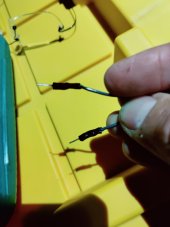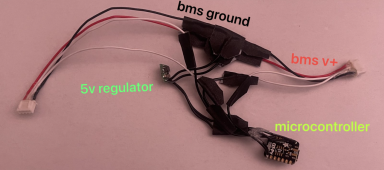Please also note that as others have alluded to above, in most cases it is NOT advisable to connect the positive side of the BMS serial port to your other devices. it carries non standard TTL voltages and may fry stuff, and in the majority of cases is not required unless you're trying to power stuff from the serial port, in which case you'll need to incorporate a voltage regulator to downconvert the voltage on the serial port to match your device, and also ensure your device doesnt draw more power than the serial port can supply, which isn't much. The other thing I'll mention is that, at least in my case, when I received a JBD bms from LLT, the wiring harness they had soldered up for the bluetooth dongle had the red wire and the black wire swapped - +ve was on the black wire, GND was on the red. Trap for young players.




